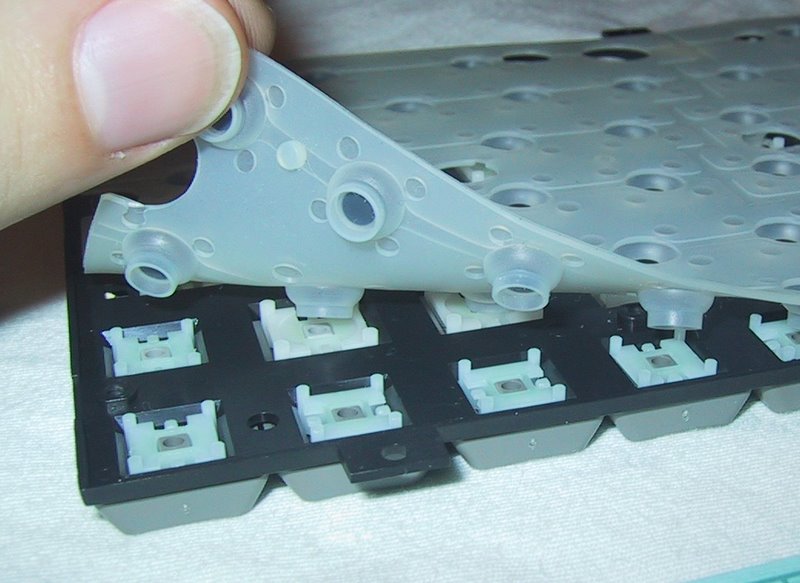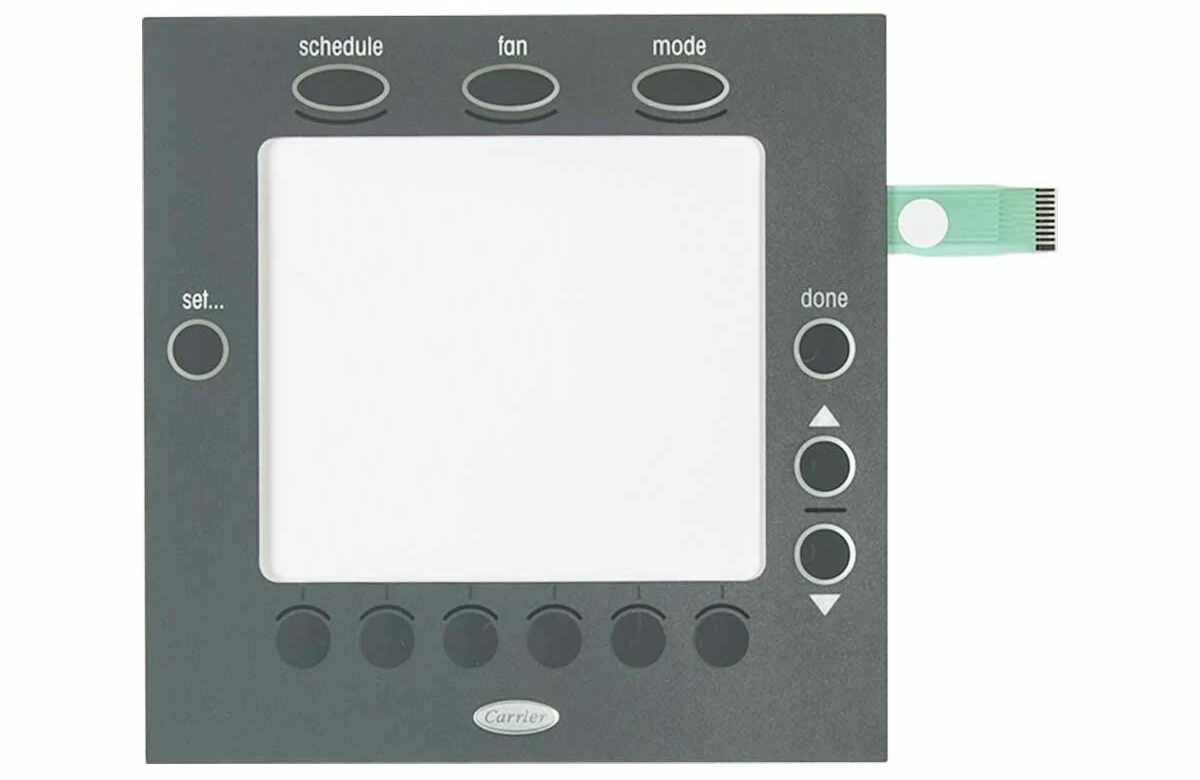Learn Why We’re a Trusted Membrane Switch Manufacturer
Learn Why We’re a Trusted Membrane Switch Manufacturer
Blog Article
Just How Membrane Switch Innovation Works and Its Duty in Individual User Interface Design
Membrane switch modern technology is an innovative technique that combines split materials for touch-sensitive input. Its layout includes graphic overlays, conductive layers, and sticky components that connect when pressed. This communication not only finishes an electric circuit but likewise affects the general individual experience. Comprehending the complexities of this technology exposes its substantial effect on interface design, prompting questions regarding its applications and future growths in different industries.
Comprehending Membrane Switch Technology
Membrane switch technology functions as a crucial part in contemporary individual interface design. This innovation incorporates graphic overlays, touch-sensitive membrane layers, and circuit layers to create a small, reliable input technique for numerous devices. The style typically contains several layers, consisting of a published graphic layer that enables individuals to connect with the device through tactile responses. Membrane buttons are recognized for their resilience, resistance to wetness, and convenience of cleaning, making them suitable for atmospheres where standard mechanical buttons might fall short. Their inconspicuous design enables seamless assimilation right into gadgets, contributing to a sleek look. In enhancement, Membrane switches can be tailored with numerous shades, structures, and icons, boosting customer experience and visual allure. This flexibility makes them prominent in consumer electronics, clinical tools, and commercial controls, where user-friendly interaction is vital. In general, Membrane button technology stands for a significant advancement in just how customers involve with electronic interfaces.
Trick Elements of Membrane Changes
Membrane changes contain several key parts that add to their capability and style. The conductive layer materials, glue and assistance layers, and graphic overlay design each play a vital duty in making sure suitable performance and user interaction. Recognizing these elements is essential for reliable interface design.
Conductive Layer Products
Conductive layer materials play a vital role in the performance and reliability of Membrane switches. These materials are accountable for finishing electrical circuits when stress is used to the switch. Commonly, a mix of conductive inks, such as silver or carbon, is used to create these layers. Silver conductive ink is preferred for its premium conductivity and toughness, while carbon ink is commonly utilized for cost-efficient applications. The option of product affects not only the electrical efficiency however additionally the overall lifespan of the button. Additionally, the density and make-up of conductive layers can influence responsive comments and button actuation. Selecting the proper conductive product is important for guaranteeing suitable efficiency in diverse interface applications.
Sticky and Assistance Layers
Adhesive and support layers are crucial components that add to the structural honesty and functionality of Membrane switches. These layers give a robust structure, ensuring that the various aspects of the Membrane button continue to be securely bound and appropriately straightened throughout their functional life. The glue layer helps with the accessory of the button to the underlying surface area, supplying durability against ecological aspects such as dampness, temperature level variations, and mechanical anxiety. Assistance layers enhance the button's rigidness, stopping deformation during use and contributing to a regular responsive feedback. With each other, these elements play an essential role in maintaining the performance and long life of Membrane switches, eventually affecting the total individual experience in interface design.
Graphic Overlay Design
Although typically neglected, graphic overlay layout plays an essential role in the functionality and visual appeals of Membrane buttons. This design mostly works as the user interface in between the customer and the electronics, giving both aesthetic appeal and functional clearness. Efficient visuals overlays make use of shade, typography, and icons to assist individuals in comprehending and steering controls device functions. The selection of materials effects resilience and responsive feedback, making sure the overlay endures wear while keeping a pleasant individual experience. Additionally, accurate placement of the overlay with the underlying elements is essential for optimal efficiency. To conclude, thoughtful visuals overlay layout enhances functionality, adds to brand name identity, and eventually influences user fulfillment in tools utilizing Membrane switch modern technology.
The Production Refine of Membrane Changes
The manufacturing process of Membrane switches includes a number of vital actions that assure capability and resilience. A visuals overlay is made, incorporating user interface elements and branding. This overlay is printed onto a versatile substrate, generally polyester or polycarbonate, making use of accuracy printing strategies to identify quality and shade accuracy.Next, adhesive layers are applied, complied with by the assimilation of conductive traces, usually made from silver or carbon, which are essential for electric connection. These traces are etched or screen-printed onto a different layer. Hereafter, a spacer layer is contributed to create the required space between the overlay and the circuit layer, permitting tactile responses when browse around this web-site activated.Finally, the elements are put together and evaluated for quality control, guaranteeing that each Membrane switch meets the required requirements for efficiency and reliability. This careful process results in a durable item matched for different applications in individual interface design.
Benefits of Using Membrane Switches Over

Membrane switches over offer numerous benefits that make them a favored option in individual interface style. One significant benefit is their lightweight and small nature, enabling structured designs in different applications. Furthermore, Membrane buttons supply a sealed interface, protecting against dirt, wetness, and impurities, which improves resilience and integrity. They are also highly adjustable, enabling designers to develop unique graphics and formats tailored to certain user needs.Another advantage is their cost-effectiveness, as they typically need much less product and labor compared to conventional buttons. The responsive feedback of Membrane buttons can be crafted to boost user experience, using an enjoyable action without the mass of mechanical components. Membrane buttons can be conveniently incorporated right into varied environments, such as medical devices, industrial devices, and customer electronic devices. On the whole, these benefits underscore the growing popularity of Membrane switches in contemporary interface style.
Applications in Numerous Industries
Widely made use of across different sectors, Membrane button technology has actually located its area in applications varying from medical devices to consumer electronics. In the healthcare field, these switches are important to gadgets such as diagnostic equipment and client tracking systems, supplying durable, easy-to-clean interfaces that withstand sanitation procedures. The automobile sector uses Membrane buttons in dashboards and control panels, giving reputable operation in challenging environments.Consumer electronic devices, including home devices and pc gaming consoles, advantage from the smooth design and customizability of Membrane buttons, improving customer communication. Furthermore, commercial equipment utilizes these switches for control board, making certain resistance to dust and moisture while keeping functionality.Moreover, the aerospace and armed forces industries utilize Membrane switches for sturdy applications, where dependability and performance are critical. Generally, Membrane button innovation offers diverse industries by incorporating performance, resilience, and visual appeal, making it a functional option for contemporary user interfaces.

Creating Customer User Interfaces With Membrane Switches Over
When making individual interfaces with Membrane switches, careful consideration of both functionality and aesthetic appeal is crucial. Membrane switches over supply a streamlined, inconspicuous style that can improve aesthetic charm while preserving usability. Designers have to concentrate on switch format, making sure user-friendly placement for ease of operation. The tactile comments offered by the Membrane button is crucial; it can affect customer satisfaction and overall experience.Additionally, shade and graphic elements need to align with the brand name identification, reinforcing acknowledgment and knowledge. Selecting durable products that hold up against damage is likewise important, as long life contributes to usability in time. Incorporating backlighting can enhance visibility in numerous lighting problems, additionally improving customer interaction. Ultimately, a properly designed Membrane switch user interface equilibriums both form and feature, ensuring that the customer experience is both engaging and reliable, satisfying the needs of diverse applications throughout industries.
Future Trends in Membrane Switch Modern Technology
As Membrane button innovation advances, the integration of clever performances is coming to be increasingly popular. These improvements allow enhanced interactivity and connectivity within user interfaces (membrane switch manufacturer). Additionally, the change towards environmentally friendly materials mirrors a growing dedication to sustainability in design methods
Smart Membrane Switches Over

Eco-Friendly Products Usage
In the middle of visit site the innovations in Membrane button technology, a considerable fad is emerging in the direction of making use of environment-friendly products. Manufacturers are progressively focusing on sustainability by incorporating safe inks and biodegradable plastics, decreasing ecological influence. This shift not only lines up with international ecological criteria but also addresses customer need for greener items. Innovations in material science have enabled the advancement of sturdy, eco-friendly alternatives that maintain performance without compromising quality. These materials use equivalent capability to typical alternatives while decreasing waste and poisoning. As sectors come to be extra eco-conscious, the assimilation of lasting techniques in Membrane button manufacturing is expected to climb, enhancing a commitment to ecological duty and leading the means for even more lasting interface services in the future.
Frequently Asked Questions
How Do Membrane Changes Differ From Conventional Mechanical Switches?
Membrane switches differ from typical mechanical buttons mostly in building and operation. They make use of adaptable layers that produce a secured user interface, whereas mechanical switches rely upon physical motion and call, resulting in distinctive longevity and responsive responses qualities.
Can Membrane Changes Be Customized for Specific Applications?
Membrane switches can undoubtedly be personalized for particular applications - membrane switch manufacturer. Manufacturers develop them to satisfy distinct needs, permitting customized designs, graphics, and performances that improve customer interaction and fit particular functional demands efficiently
What Is the Lifespan of a Membrane Layer Switch?
The lifespan of a membrane layer button generally varies from 1 to 5 million actuations, depending on aspects such as worldly quality, environmental problems, and use frequency. Routine screening can help identify its durability and integrity in applications.
Are Membrane Changes Water Resistant or Immune to Chemicals?
Membrane buttons can be designed to be waterproof and resistant to chemicals, depending upon the products made use of and producing processes. Correct securing and safety coatings enhance their toughness in numerous environmental conditions and applications.
Exactly How Do Membrane Switches Over Influence Tool Energy Usage?
Membrane buttons can substantially influence tool power intake by making certain efficient procedure. Their reduced power requirements during activation assistance decrease power use, adding to longer battery life and total better performance in electronic devices. Membrane switches are understood for their toughness, resistance to dampness, and ease of cleaning, making them appropriate for environments where standard mechanical switches may fail. The automobile sector uses Membrane switches in dashboards and control panels, giving reliable procedure in challenging environments.Consumer electronics, consisting of home devices and video gaming consoles, benefit from the sleek design and customizability of Membrane switches, enhancing user communication. Furthermore, industrial equipment utilizes these switches for control panels, making certain resistance to dirt and wetness while maintaining functionality.Moreover, the aerospace and army markets use Membrane buttons for tough applications, where reliability and efficiency are important. The evolution of Membrane button innovation is entering an interesting phase with the appearance of wise Membrane switches, which integrate innovative features and capabilities. Membrane switches over differ from conventional mechanical buttons largely in building and construction and procedure.
Report this page